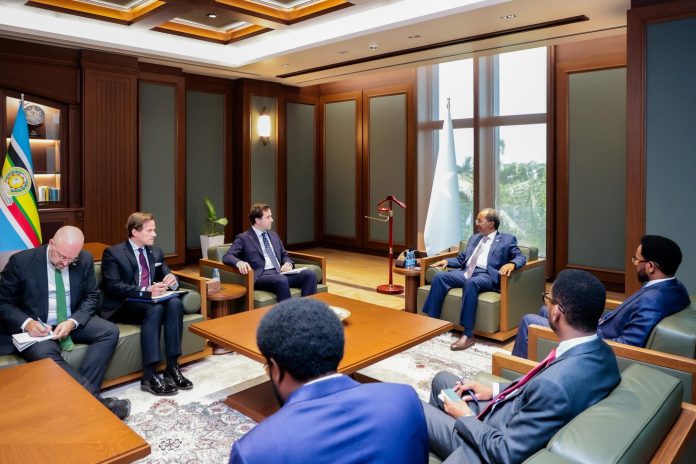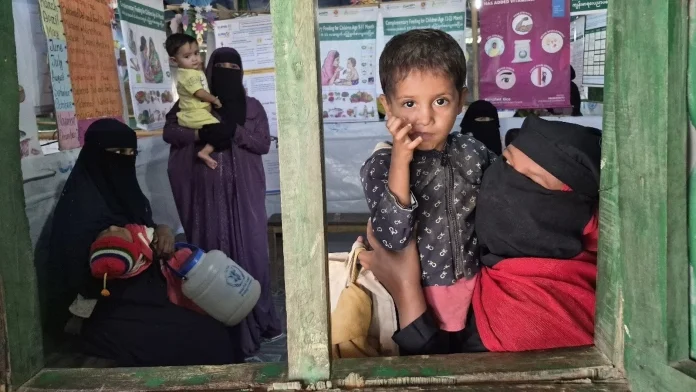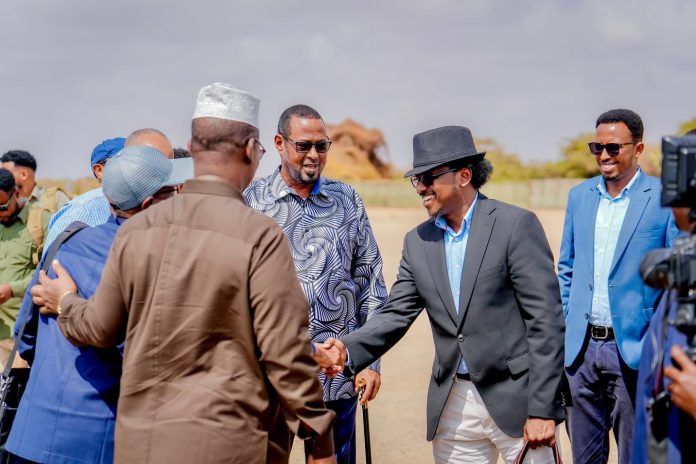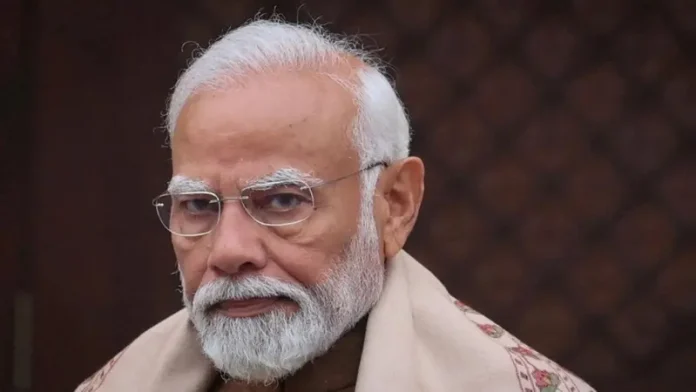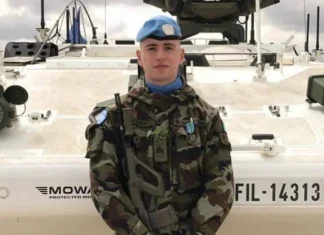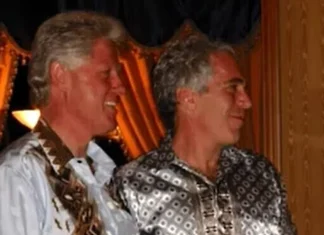President Hassan welcomed a high-ranking delegation from the Swedish government today at the presidential palace in a move to strengthen diplomatic ties between the two countries. The delegation, led by Sweden’s Minister of Foreign Affairs, arrived in Somalia to discuss various issues of mutual interest and cooperation.
How Aid Cuts Are Straining the World’s Largest Refugee Camp
Where the world’s headlines grow thin: a morning in Cox’s Bazar
The dawn in Cox’s Bazar is a soft, anxious thing: tarpaulin flaps shiver in seaside winds, goats bleat somewhere between narrow lanes of bamboo poles, and the chatter of children threads through the air like a fragile promise. Walk a few dusty minutes from the main road and you stand before rows upon rows of makeshift shelters — the largest concentration of displaced people on earth — where the ordinary mechanics of life have been reduced to survival and small rituals of hope.
Inside a low, corrugated nutrition centre run by an Irish aid agency, a tiny infant clenches a fist and refuses to sleep. Her name is Ahshiya; she is seven months old and, at her last weigh-in, barely tipped the scales at 4.7 kilograms — the weight of a newborn in many parts of the world. Her mother, 21-year-old Sajida, sits beside her, fingers folded around a thin cup of tea, eyes someone else’s age.
“She was born after everything burned,” Sajida tells me in quiet Bengali broken sometimes by a Rohingya dialect. “We left our village with only what we could carry. Here, food comes from trucks. Doctors are kind, but kind does not feed. I am sick too — the fever comes and I sleep all day. When she cries, it is like a drum in my chest.”
Not just another statistic: faces behind a looming funding cliff
There is a political story behind this intimate scene. In recent years, international donor priorities shifted; budgets tightened and emergency accounts were drawn down. The result: a funding shortfall for the Rohingya response in Cox’s Bazar estimated at roughly 50% for the year — a fiscal chasm that becomes a moral crisis when turned into rations, medicines and classrooms.
“When donors turn away, the most vulnerable are first to feel it,” says Sheikh Shahed Rahman, Programme Director for Concern Worldwide in Bangladesh, wiping dust from his trousers as he gestures toward the intake room filled with mothers and infants. “We are bracing for a higher rate of malnutrition that will cause the death of young children if immediate action is not taken. That is not rhetoric — it is what the data is warning us about.”
UN Secretary-General António Guterres has called Cox’s Bazar “ground zero for the impact of budget cuts,” and the numbers behind that phrase are stark. Between January and September of the referenced reporting period, UNICEF recorded an 11% rise in children with acute malnutrition. Meanwhile, the World Food Programme warned it might have to reduce food assistance from the equivalent of roughly $12.50 per person per month to about $6 — a cut that turns a ration into a life-or-death lottery for families already skirting the margins.
What a cut in dollars looks like in daily life
Imagine a family with three children. A reduction in food support means fewer lentils, less oil, diminished rice. Parents rotate scarcity: the old eat last, pregnant mothers coin meals into bites for their babies. Immunization and pregnancy clinics stretch their hours and their supplies, and a nutrition centre that keeps infants like Ahshiya gaining weight might be forced to close its doors.
“School protects the kids,” Rana Flowers, UNICEF’s representative to Bangladesh, explained. “It is not just books. It is safety, structure, and a place where child marriage and recruitment can be prevented. Close the schools and these children are suddenly exposed to risks that will scar them for life.”
Children with futures on hold
Thirteen-year-old Nur Hares loves history. He dreams — as children in any part of the world do — of becoming a pilot, a teacher, an engineer. His classroom, a cluster of bamboo frames with corrugated sheeting, is funded only until the end of December. After that, if funding isn’t renewed, up to 300,000 children in Cox’s Bazar could be without access to learning services, UNICEF warns.
“I read whenever I can,” Nur told me, his fingers tracing a worn page. “When someone asks me what I want, I say many things. I want to fly above the hills where I used to live. I want to teach others what I learn.”
Beyond the camp: a mirror for global choices
This is not merely a localized emergency. It is a mirror reflecting a global tension: competing political narratives about immigration, aid budgets, and the meaning of responsibility in a world of climate shocks and protracted displacement. Donor fatigue, the politicization of aid, and the pressure on national budgets all feed into decisions that play out in places like Cox’s Bazar.
“The politics of compassion is complicated,” says Dr. Lina Ahmed, a humanitarian policy expert based in Dhaka. “But the arithmetic is simple: when funding declines, services decline, not abstractly, but in real bodies and real children. It is the most marginalized who bear the brunt.”
Local colour, small mercies
And yet, amid the sobering figures, there are constellations of resilience. Community health volunteers who once taught under a mango tree now lead nutrition screenings, local Bangladeshi women queueing to hand over a bowl of muri (puffed rice) as an act of neighborliness. At sunset, the prayer calls from makeshift mosques thread through the camp. Children play cricket with broken bats and flattened tins, their laughter a stubborn refusal to be erased.
“We are tired, but we have each other,” an elder named Rahim said to me while sipping sweet tea. “If the world gives less, we will find ways to do more. But there are limits. We are not magic.”
What can readers do — and what does this ask of us all?
Stories like these force a question into the reader’s hands: when the choices of distant capitals ripple into the daily life of a child like Ahshiya, what responsibility do we carry? Policy shifts, donor decisions, and budget tables may seem remote, but their consequences land in the most intimate of places — the hand that tries to warm a small, hungry infant.
If you want to act, consider supporting reputable relief agencies working on the ground, raise your voice with elected representatives about the human cost of aid cuts, or learn more about the systemic drivers of forced displacement. Names you’ll read about in reporting — UNICEF, WFP, Concern Worldwide and local Bangladeshi NGOs — are among those doing the heavy lifting, though their work becomes harder each time a funding cheque is reduced.
The long view
The camp at Cox’s Bazar is a testament to endurance and a warning about neglect. The crisis there is a concentrated example of a global problem: when short-term politics trump long-term commitment, emergencies calcify into crises that multiply across generations.
So when you picture a child in a tarpaulin hut, consider not just the image but the policy that frames it. Ask yourself: are we willing to let entire childhoods be determined by a budget line? Or will we choose, collectively, to keep the lifelines open?
For Sajida and Ahshiya, the answer will be written in the coming months — in the queues at nutrition centres, in the hours a classroom stays open, in the ration card that keeps a pot of rice warming on a stove. They are waiting, as the rest of us must, to see whether the world’s promises will outlast the headlines.
M23 forces to withdraw from strategic Uvira in eastern DRC
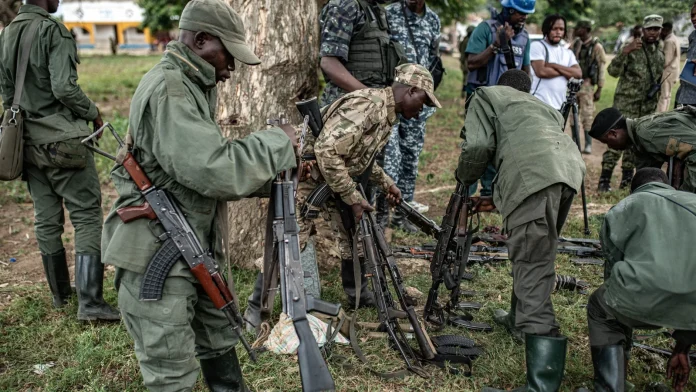
Uvira’s Quiet Morning and the Echoes of War
The sun rose over Lake Tanganyika like it had every morning for centuries, painting the shoreline of Uvira in honey-gold. Fishermen pushed out their wooden canoes, women arranged fresh fish and cassava at the market stalls, and children chased each other along the dusty alleyways between corrugated-roof homes.
But last week the rhythm broke. Soldiers arrived. Flags appeared where laundry had hung. A militia—known as M23—moved into the city, turning a busy market into a theater of uncertainty. And then, almost as abruptly, the group announced it would pull back at the request of American mediators.
“We saw men in uniform at every corner,” recalled Marie, 34, a vendor who has sold fish on the same bench for 15 years. “I thought, ‘Is this how the peace they promised will look?’ People locked their doors and listened to the radio. The fear started again.”
What the Announcement Means — and What It Doesn’t
On Thursday the M23 issued a statement, signed by their coordinator Corneil Nangaa, saying they had agreed to “unilaterally withdraw” from Uvira after a request from US mediators. The group called for demilitarisation of the city, protections for civilians and infrastructure, and third-party monitoring of any ceasefire.
The withdrawal is framed as a goodwill gesture toward a parallel peace framework negotiated in Doha last November—an agreement that has largely remained words on paper amid continued violence in eastern Democratic Republic of Congo (DRC).
“This is a small step, but small steps in this region are the only things that ever seem to keep people alive,” said Pierre Mbusa, a humanitarian coordinator who has worked in South Kivu. “But a withdrawal on paper and a withdrawal on the ground are different. We need verification and guarantees.”
Who Is M23 and Why Does Uvira Matter?
M23 is a rebel movement that resurfaced in recent years after earlier uprisings a decade ago. The group draws on grievances, ethnic tensions, and the chaotic militarised networks that have long thrived in the DRC’s east. Kinshasa and various international observers have accused neighbouring Rwanda of supporting the movement; Kigali has repeatedly denied backing the rebels.
Uvira sits on the eastern edge of the DRC, a strategic port city on Lake Tanganyika with routes into Burundi and Tanzania. Control of the city isn’t only about checkpoints and administration—it’s a doorway to trade, mineral routes and influence. The region is also part of a vast, mineral-rich tapestry: the DRC supplies a major portion of the world’s cobalt (roughly 70% of global production) and is a crucial source of copper, tin, tantalum and gold that power global technologies.
The Human Toll: Displacement, Fear, and the Economy
For civilians, the calculus is not political—it is survival. The east of the DRC has been shaped by decades of conflict; UN and humanitarian reports document millions displaced and thousands of lives lost. Today, more than 6 million people in the country are internally displaced, according to humanitarian estimates. Health clinics are overstretched; markets are disrupted; schooling is interrupted.
“When the fighters came into Vira, we packed a small bag and left the house,” said Jean-Paul, 52, a driver who fled to a neighboring village. “If they’re leaving now, where will we go back to? Who will pay for the damages?”
Local traders say the disruption is immediate and deep. “The boats have fewer passengers. People are afraid to come to town,” Marie explained. “Business was beginning to recover after the rains, but everything stops when the guns come.”
Diplomacy on a Knife-Edge: Washington, Doha and the Region
The pullback came after a request by the United States, which earlier hosted a high-profile peace agreement between Kinshasa and Kigali. That Washington deal had raised hopes—and eyebrows—by promising a roadmap toward calmer relations between the DRC and Rwanda. But the M23’s advance into Uvira tested that fragile trust.
In Doha, a parallel process produced a ceasefire text last November; M23’s statement urged the international community to implement those terms. Whether the Doha framework will now be given room to function depends on monitoring, enforcement and the willingness of regional actors to forgo strategic advantage for stability.
“Peace in the DRC requires regional buy-in, especially from Rwanda and Burundi, and real guarantees that armed groups cannot be used as proxies,” said Dr. Lillian Okoye, an expert in African conflict resolution. “Without enforcement mechanisms and economic incentives for peace, agreements tend to collapse back into violence.”
What Verification Looks Like
- Independent observers on the ground to confirm troop movements
- Demilitarised buffer zones monitored by neutral forces
- Humanitarian corridors to allow displaced people to return safely
- Transparent reporting on resource flows and mineral trading
These are the kinds of measures M23 asked for, and that civil society groups and NGOs are now demanding as conditions for any meaningful calm.
Local Color: Life Between Lakes and Mountains
Uvira’s streets are threaded with smells and sounds—cooking fires, church bells, the barter-chant of market sellers. There is a resilience to this city: women carrying woven baskets on their heads, musicians tuning their drums by the lakeside, children learning how to cook small fish over charcoal. These textures are not background; they are reasons to care.
“We are not just statistics,” said Aisha, a teacher who stayed behind to keep a small class running in a church hall. “We want to teach our children, to farm, to trade. We want to rebuild our homes without fear of waking to gunfire.”
Why This Matters to the World
This is not just an African story. The minerals that flow through eastern DRC power smartphones, electric vehicles and medical devices around the globe. Supply chains are tied to human lives here. When a city like Uvira falls into chaos, it ripples into global markets and the ethical debates about sourcing and corporate responsibility.
It also tests the international community’s capacity to intervene wisely. Do we rush troops in? Do we focus on sanctions and diplomacy? How do we prioritize protection for civilians over geopolitical gamesmanship?
Ask yourself: if the world can call for climate action and corporate accountability, can it also demand accountable systems that prevent the looting of resources and the exploitation of people who live where those resources are extracted?
What Comes Next?
The M23’s announcement offers a fragile window of possibility—but windows can be slammed shut. Verification teams must be allowed in; displaced people need safe corridors home; and regional leaders must back a process that replaces armed competition with negotiated governance and economic inclusion.
“If the withdrawal is genuine and followed by meaningful demilitarisation and monitoring, then perhaps we can see a sliver of hope,” said Dr. Okoye. “But hope without instruments—that is not enough.”
For the people of Uvira, hope is less a word than a daily act: returning to the market, fixing a roof, teaching a child. It is also a test for the international promises made in rooms from Washington to Doha. Will those promises turn into protection and accountable change? Or will they dissolve like footprints in the dust when the next group of fighters arrives?
As readers across continents, we have a stake in the answer. How will we respond when the world’s least visible crises demand the most visible commitments? The people of Uvira are waiting for a reply they can live with—one that keeps the lake’s morning light from being a reminder of the day the guns came back.
Madaxweyne Xasan oo qaabilay wafdi sare oo ka socday dowladda Sweden
Dec 16(Jowhar)-Madaxwaynaha Jamhuuriyadda Federaalka Soomaaliya Mudane Xasan Sheekh Maxamuud ayaa maanta Madaxtooyada Qaranka ku qaabilay Wasiirka Horumarinta Iskaashiga Caalamiga iyo Ganacsiga Dibadda ee dalka Sweden Mudane Benjamin Dousa.
Trump files $10 billion lawsuit against BBC over documentary edit

A $10 billion headline: a courtroom, a broadcaster, and the battle over a few edited seconds
On a humid morning in Miami, a federal courthouse suddenly felt like the stage of another political drama. The plaintiff: Donald J. Trump. The defendant: the British Broadcasting Corporation, the decades-old institution many around the world still call simply “the BBC.” The claim: at least $10 billion in damages, filed after a BBC documentary stitched together clips of Mr. Trump’s 2021 speech in a way his legal team says changed its meaning.
It reads like a plot from a streaming thriller — two billionaires’ worth of lawyers, a leaked internal memo and resignations at the heart of a storied newsroom — but the dispute raises questions that ripple far beyond the parties named in the suit. How do we hold the press to account in an era of hyper-editing and AI? When does robust journalism tip into unfair distortion? And how do libel and free-speech laws in different countries shape where these fights are waged?
What the lawsuit says — and why it went to Miami
Filed in federal court in Miami, the complaint asks a judge to award “not less than $5,000,000,000” on each of two counts: defamation and violation of the Florida Deceptive and Unfair Trade Practices Act — a combined demand of at least $10 billion. According to the papers, the BBC’s Panorama programme aired a documentary last year titled Trump: A Second Chance?, and editors allegedly spliced clips to create the impression that Mr. Trump planned to walk to the U.S. Capitol with supporters during the January 6, 2021 attack.
“They took words out of their context and made a new sentence,” a statement attributed to Trump’s legal team said in court filings, charging the broadcaster with “intentionally, maliciously, and deceptively doctoring” the footage. The complaint also notes a memo from Michael Prescott, a former external adviser to the BBC’s editorial standards committee, which flagged the slicing together of clips last summer — a memo that eventually leaked to a British newspaper and reignited public scrutiny of the episode.
Why Miami? The lawsuit’s placement on U.S. soil is strategic. British defamation law imposes a one-year limitation on claims tied to an individual publication — a timetable that, according to the suit, has already run for the Panorama episode. Filing in the United States also forces the case into a legal environment with robust First Amendment protections; to succeed here, a public figure like Mr. Trump must prove not only falsity but “actual malice” — that the BBC knowingly published falsehoods or showed reckless disregard for the truth.
Lawyers, standards and the high bar of “actual malice”
Legal scholars watching the complaint point out the steep climb for any plaintiff. “In U.S. defamation law, especially after New York Times Co. v. Sullivan, the standard for public figures is extremely protective of speech,” said a media law professor who asked to be described simply as an independent analyst. “You have to show the broadcaster knew it was lying or was reckless — mere sloppiness usually isn’t enough.”
The BBC, for its part, has denied the allegations of legal defamation. The broadcaster’s chairman, Samir Shah, has written a letter of apology acknowledging the editorial mistake and telling Mr. Trump as much. Still, BBC officials insist the program’s key claims are substantially true and that any editing choices did not create a false impression. The corporation could also argue the documentary’s context and intent were to illuminate, not assassinate, a reputation.
What a win would require
To prevail, Mr. Trump’s legal team would have to satisfy the court that the edits materially changed the meaning of the speech and that the BBC either knew the clips were misleading or acted with reckless disregard for the truth. “Disentangling editorial decisions from actionable falsehood is notoriously difficult,” the media law professor added.
Inside the BBC: resignations, apologies and newsroom unease
The fallout inside the BBC was swift and public. The controversy precipitated the resignations of director-general Tim Davie and Deborah Turness, the head of news — departures that left staffers, viewers and government officials debating where accountability should land for perceived editorial failures.
“There’s a real sense of collective embarrassment,” said one BBC staffer who asked to remain anonymous. “People are upset, not just because of the headlines, but because the standards we rely on to justify public funding were questioned on the world stage.”
British politicians were split in their reactions. A government minister suggested the BBC had been right to apologise but also urged the corporation to defend its journalism from legal attack. Across the Atlantic, the lawsuit has been welcomed by those who believe legacy outlets harbor bias; others fear the move is another chapter in the broader campaign to sue and intimidate journalists.
Beyond the headlines: why this matters globally
This dispute is not merely about one clip or one documentary. It sits at the intersection of trust in institutions, the weaponization of litigation, and the dizzying speed at which media can be edited, amplified and weaponized in political wars. In recent years, high-profile figures have taken legal action against newspapers and broadcasters around the world — sometimes winning settlement dollars, sometimes losing in court. The Trump-BBC case is the latest and perhaps boldest example of how litigation is being used as a tool of political combat.
There’s also a technological angle. Mr. Trump has publicly suggested the possibility that artificial intelligence might have been used to alter his speech — a claim that taps into deep-seated anxieties. While there’s no public evidence that AI created the contested edit, the very invocation of that possibility underscores an uncomfortable truth: modern editing tools make it easier than ever to reshape reality in ways that audiences may not detect.
Questions for readers—and for democracy
What do you expect of journalists when reporting on powerful public figures? Is an apology and an internal shake-up enough, or should broadcasters face heavier penalties when mistakes are made? How should courts balance protecting reputations with preserving vigorous public debate?
Globally, the case asks us to confront a trade-off. Robust, often messy journalism is essential to holding power to account. Yet journalism that slips into distortion corrodes the very trust that makes it effective. Legal systems can offer remedies for harm — but when litigation becomes a political weapon, what gets lost in the clamour is a quieter civic task: rebuilding audiences’ confidence in shared facts.
Closing scene: the long shadow of a few seconds
In the weeks and months ahead, lawyers will parse frame rates and editorial logs while commentators spin theories about motive and bias. But for anyone who watched the television footage that day on the Capitol steps, the episode is a reminder: a matter of seconds on a timeline can change how millions remember a moment. The stakes — reputational, political and financial — are enormous.
Ultimately, this is a story about trust. Trust in media, trust in institutions, trust in law. It is also an invitation: to think critically about the media we consume, to ask how we hold powerful organizations to account, and to decide what kind of public square we want. Do we want a press that can be rough and relentless, or a press so cautious it stops showing the grit of reality? The courtroom in Miami will try to settle a legal question. But the cultural reckoning it has reopened is one we all have a hand in resolving.
Wafdi hordhac u ah Madasha Samata-bixinta oo ka dagay Kismaayo iyo wararkii u danbeeyay shirka
Dec 16(Jowhar)-Siyaasiyiinta mucaaradka ayaa ku qulqulaya magaalada Kismaayo ee dowlad-goboleedka Jubbaland, iyaga oo ka qeyb galaya shir wadatashi ah xilli ay isa soo tarayaan xiisadaha siyaasadeed iyo hubanti la’aanta ka taagan doorashada 2026.
Ra’iisul wasaaraha Hindiya oo booqashadiisii u horeysay ee Afrika ka bilaabaya Itoobiya
Dec 16(Jowhar)-Raysal Wasaaraha Hindiya, Narendra Modi, ayaa lagu wadaa inuu manta booqasho ku tego dalka Itoobiya, taas oo ah booqashadiisii ugu horreysay ee rasmi ah ee uu ku tago dalkaas.
Bondi Beach attack victims: who they are and confirmed details so far
A beach of light turned to night: Bondi after the shooting
There are places that feel like summer even when winter sits on the calendar. Bondi Beach is one of them — a crescent of sand where surf, sun and salt-tempered laughter gather people from across Sydney and the world. On the first night of Hanukkah, when families were lighting candles and exchanging hopes, that glow was swallowed by gunfire.
By morning the shoreline resembled a movie set left mid-scene: candles and flowers arranged on damp sand, a child’s shoe half-buried near the lifeguard tower, and a mosaic of grief — people grouped in shock, volunteers handing out blankets, paramedics talking in hushed, weary tones.
A tally of loss
Authorities now say 15 people were killed in the attack — the ages of the deceased spread from 10 to 87. Fourteen died at the scene; two others, including a 10-year-old girl, succumbed in hospital. Forty-two people were taken to hospitals across Sydney, including four children. As of the latest updates, 27 remain under medical care, with six in critical condition and others ranging from serious to stable.
- Dead: 15 (ages 10–87)
- Injured transported: 42 (including 4 children)
- People still in hospital: 27
- Critical: 6
- Police officers wounded: 2 (both serious but stable)
Police have described the event as a terrorist incident aimed at a Hanukkah celebration. They say the attack appears to have been carried out by a father and son, and that one of those assailants died at the scene.
Faces behind the numbers
Numbers can feel numbingly abstract. Names crack that shell open.
The youngest victim is being remembered simply as Matilda, a 10‑year‑old whose school — Harmony Russian School of Sydney — wrote that “her memory will remain in our hearts.” An aunt who spoke with the media described her as “a sweet, beautiful, genuine girl” and said Matilda had been at the celebration with her younger sister, who witnessed the attack and is now “devastated.” “We will never be a happy family again,” the aunt said, her voice a cut through the early light.
Among the dead was 87‑year‑old Alex Kleytman, a Holocaust survivor who, according to the international Chabad organisation, died shielding his wife. “He was Ukrainian by birth, a man who had carried the weight of history on his shoulders and still found time to love,” said one community member. “To hear this — he who lived through horrors and still chose life — to lose him like this… it’s impossible.”
Rabbi Eli Schlanger, 41, remembered by family and colleagues as joyful and tireless in service, was attending the event with his young family. “Eli was a light in the truest sense,” said a cousin who flew in from the UK. “Two months ago they celebrated the birth of their youngest child; he went to the beach because he believed joy should be contagious.”
Other victims include Slovak national Marika Pogany, 82, who volunteered with Meals on Wheels and who Slovakia’s president publicly mourned; Dan Elkayam, a 27‑year‑old French citizen and footballer building a new life in Sydney; freelance photographer and former rugby player Peter Meagher, who was reportedly taking photographs at the event; and Tibor Weitzen, a father and husband who died shielding his spouse.
Reuven Morrison, a member of the Chabad community who split his time between Melbourne and Sydney, and Rabbi Yaakov Levitan, a secretary at a local Beth Din, were also among the dead. Each name is a life that threaded into other lives — congregations, clubs, kitchens, classrooms. They carried recipes, nicknames, small kindnesses that now ripple outward in shock.
Words from the community
“We are angry, we are heartbroken, and we are resolute,” said a local Jewish community leader at a candlelit vigil. “They came to celebrate light. We will honour them by keeping that light alive.”
A volunteer from a café near the beach, who asked to be identified only as Sarah, described the scene she saw when she emerged from closing up: “People running; a kid I know just standing there with a candle he’d bought earlier. It was impossible. Bondi is where we go to breathe out — now everyone is holding their breath.”
Emergency response and questions that remain
Ambulances converged quickly, witnesses say. Lifeguards who usually patrol the breakers became stretcher-bearers; surfers pulled people from panic in the shallows. Two police officers were wounded by gunfire and are being treated in hospital. The official classification of the incident as terrorism points to motive; investigators are working to piece together how and why this place — a beach, a weekend — was chosen.
“We owe it to the victims to be thorough,” the police commissioner told reporters. “This was not just an attack on individuals; it was an attack intended to terrorise a community gathering to celebrate their faith.”
Hanukkah, symbolism and the wider context
Hanukkah celebrates the persistence of light in times of darkness — a small lamp that burned for eight days. The festival is often marked by public candle‑lighting, music, and gatherings; for many, it is a joyful act of cultural assertion. That a first‑night celebration became a target reverberates far beyond Bondi’s sand.
Experts say the attack fits an ugly global pattern: religious and ethnic communities frequently become targets in a world where political polarisation, online radicalisation and easy access to weapons can combine with catastrophic consequences. “We are seeing a disturbing trend of public, symbolic attacks intended to instil fear in communities,” said Dr. Miriam Cohen, a sociologist who studies hate crimes. “The social media echo chamber and the normalisation of extreme language help incubate violence.”
Bondi in small details: the scene after
Local color matters because it humanises. A surf cam that usually streams crashing waves now shows a little knot of people at the northern end of the beach, heads bowed. A group from a nearby synagogue began a spontaneous procession, chanting softly as they placed stones on makeshift memorials (a Jewish custom of remembering the dead). Coffee cups and croissants were set out by volunteers for first responders. A lifeguard’s whistle, usually a tool of caution, now punctuated the air in a way that sounds oddly ceremonial.
“You think of Bondi as a bright postcard,” an older man who’d lived nearby for three decades told me. “You don’t think about grief here. But grief has the same face everywhere.”
What now? For readers, for neighbours, for a city
There will be inquiries and investigations, vigils and requiems. There will also be the quiet, hard work of rebuilding: counselling for the injured and traumatised, legal processes, interfaith outreach. If you’re reading from far away, consider this an invitation rather than a spectacle: what would you do if your town, your festival, your family were targeted? How do communities balance remembrance with the need to carry on?
For those looking to help: local synagogues, community centres, and hospital foundations often organise support; in days like these, tangible aid — blood donations, volunteering time, donations to verified relief funds — matters. Attend local vigils. Keep conversations alive in your circles about protecting vulnerable communities.
At the end of the day, people will return to the beach. They will place candles, as they did before, but now each flame will hold a doubled meaning — a small, stubborn refusal to let terror extinguish communal life. “Light is what we use to remember,” said a rabbi at a makeshift shrine. “And to the light we add our hands, so that together we can hold it alight.”
That image — a city holding a candle against the wind — is what Bondi and the families of the dead, injured and scarred ask us to carry with us. In a world that sometimes feels defined by its darkest moments, what will you choose to remember?
Police: Bondi shooters inspired by Islamic State ideology
Night of Light and Gunfire: Bondi’s Hanukkah Vigil Shattered
They had come to celebrate the small, bright miracle of Hanukkah under an unseasonably cloudy Sydney sky—families, tourists, the occasional lone surfer still dusty with salt, and a cluster of rabbis in coats against the chill. A giant menorah glowed against the sails of the Opera House like an invitation to hope. Then the small, sharp sounds arrived: first mistaken for fireworks, then—terrifyingly—recognizable as the staccato of gunfire.
By dawn, the stretch of sand between the Bondi Pavilion and the surf had become a crime scene and a memorial. Sixteen people lay dead, among them a 10-year-old girl, a Holocaust survivor and a rabbi who left behind five children. One of the alleged attackers, later identified as a 50-year-old man, was killed at the scene by police. His son, 24, lay in hospital in critical condition after also being shot. About 25 survivors were receiving care in Sydney hospitals.
Shockwaves from a Tourist Shore
Bondi Beach is shorthand for relaxed Australian summer life—lifeguard towers painted like beacons, weekend markets selling flaky pastries and strong coffee, joggers tracing the cliff path to Bronte. Most days the biggest drama is a swell that challenges a novice boarder. On the night the shooting happened, the violence felt impossibly distant from that easy rhythm.
“I heard the bangs and I thought it was a pile-driver, then people ran past me with their coats on their heads,” said a local café owner who asked to be named only as Lina. “We shoved customers behind the counter, locked the door. For a while you couldn’t tell whether the day would end.” Her voice shook; her business sits two streets back from the Pavilion, a block that in summer thrums with languages from across the world.
In the early hours, mourners left flowers and children’s drawings by the Pavillion. Candles guttered in the wind. A menorah image that had been projected on the Opera House sails was suddenly a national spotlight on grief.
Father and Son, and a Trail to the Philippines
Police described the attack as brutally precise and shockingly brief—about ten minutes of chaos during which the alleged perpetrators opened fire at the crowd. Authorities say the pair had traveled to the Philippines in the weeks before the assault; Philippine police confirmed they are investigating the men’s recent visit.
Australian investigators have said early indications suggest the attack was inspired by Islamic State. Investigators reportedly found improvised explosive devices and homemade flags linked to that group in a vehicle registered to the younger man.
“What we are looking at are the actions of two people who appear to have aligned themselves with a violent ideology,” said a counterterrorism analyst who asked not to be named. “This looks like a case of local actors drawing inspiration from global extremist narratives—online and offline networks that nurture radicalization across borders.”
The Philippines’ southern island of Mindanao has harbored Islamic State–linked networks in recent years. Once capable of holding a city—the 2017 Marawi siege being the most dramatic example—those networks have been degraded but not eradicated, reduced to small, mobile cells. Security experts warn that diminishing territorial control does not erase reach; it often disperses it.
Homefront Aftershocks: Antisemitism, Guns and Policy
For Australia, this was the worst mass shooting in nearly three decades, and it has prompted unease and urgent debate. The attack was explicitly targeted at a Jewish festival, and leaders from the Jewish community have called for stronger protection.
“We can no longer take for granted our ability to gather, to pray, to teach our children in public,” said a Jewish community leader in Sydney. “This was not a random act; it was calculated and symbolic.”
Questions about gun policy followed quickly. Police revealed the older man held a firearms licence and owned six registered guns; the licence had been issued in 2023. The federal government announced an immediate review of firearms regulations and possession rules—prompting comparisons to the sweeping reforms after the Port Arthur massacre in 1996, when Australia tightened gun ownership laws in response to one of its darkest days.
“Gun control is not a silver bullet,” said a criminologist at the University of Sydney. “But when incidents like this happen, we must ask whether existing checks on licensing, storage and mental health assessments are robust enough.”
Heroes and Heartache
Among the shrapnel of grief, stories of courage emerged. A 43-year-old man—described by relatives as a father of two—charged one of the attackers and wrested a rifle away, sustaining gunshot wounds. He remains hospitalized. A GoFundMe established to help with his recovery had raised nearly A$1.9 million within days, a testament to the powerful instinct of strangers to repair what violence has shattered.
“We’re not here to make heroes out of people,” said a local paramedic. “We’re here because ordinary people did extraordinary things in the worst of times.”
Internationally, representatives visited Bondi. An Israeli diplomatic figure laid flowers and spoke about fear and the urgent need to protect Jewish life in Australia. For families who lost loved ones, speeches and condolences only echo the central absence—an empty chair at a table, a toy unmoved, a book unread.
Why This Matters Globally
This tragedy is not only a local tragedy; it is part of a broader pattern. Across democracies, Jewish institutions have experienced a spike in threats. The phenomenon of “lone actor” terrorism—individuals or small cells radicalized remotely while inspired by transnational extremist propaganda—has complicated traditional intelligence work. The internet has turned isolation into a marketplace of grievance and instruction.
So what are societies to do? Strengthen intelligence cooperation across borders. Address online radicalization with both tech policy and community-based prevention. Bolster protections around vulnerable gatherings without turning those spaces into chapels of fear. And, crucially, confront antisemitism and all forms of hate as public-health problems: contagious, corrosive and requiring collective inoculation.
After the Candles Go Out
On Bondi’s sands, the surf continued to rhythmically fold itself into shore as if nothing had happened. Tourists trickled past the memorials, heads bowed. Local surfers came to leave flowers tied to their wetsuits’ ankle straps. In lifeguard towers, people spoke in low voices about the need for community and vigilance.
“I keep thinking about that girl, about the children,” said a woman who had come to light a candle. “How do we explain this to them? How do we help them feel safe again?”
There are no easy answers. But as the city gathers evidence and the courts prepare to process the facts, the scene at Bondi remains a raw tableau of what happens when ideology collapses into slaughter. It also stands as a reminder that bravery and compassion frequently blossom in the same soil as grief.
How will we choose to remember this night—and what will we change so it never repeats? That question now hangs over Sydney as steadily as the winter light over the Tasman Sea.
Live coverage: Australia affirms zero tolerance for antisemitism
Thanks — I’m ready to do this, but I don’t see the original news content you want rewritten. Could you either:


